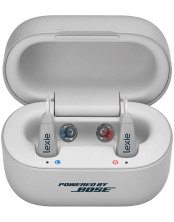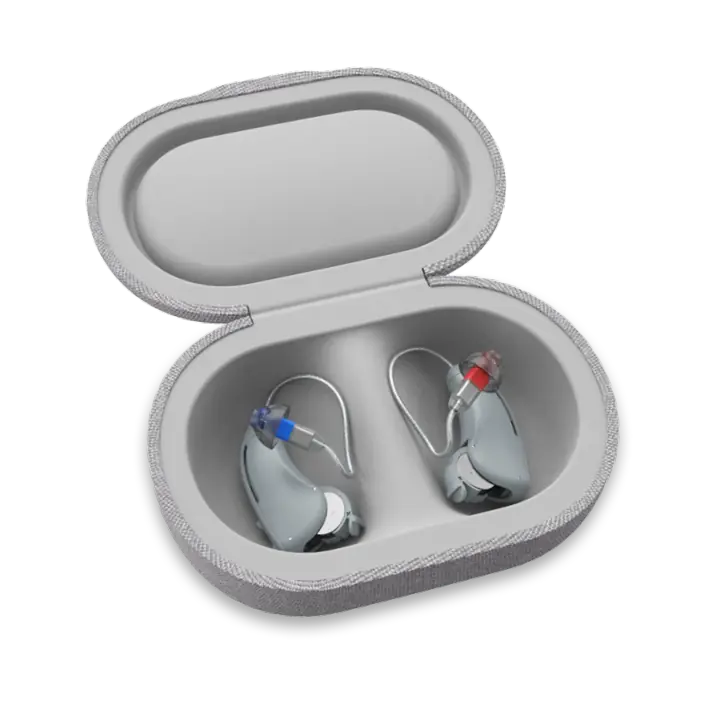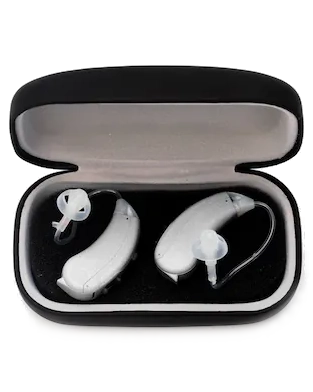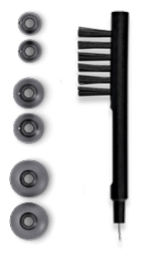Surgery and Hearing Loss
Published: August 18, 2021
Updated: August 18, 2021
One of the first questions individuals ask when they are diagnosed with hearing loss is if it can be surgically corrected. The answer to the options for surgery and hearing loss is more complex than you might think. To understand this, we first need to understand different types of hearing losses and what causes them
Types of hearing losses
Our ear has three parts, the outer, middle- and inner part of your ear. You can have pathology in any part of the ear. Where the problem lies will dictate how it is treated.
Outer ear pathologies
If your hearing loss is caused by a blockage in your outer ear, it is easily treatable by removing the blockage. An example of a blockage would be wax or a foreign object blocking your ear canal. Another example is a narrowed or collapsed ear canal, which can usually be surgically corrected.
Middle ear pathologies
When you have a problem in your outer or middle ear it causes what we call a conductive hearing loss. This means your cochlea or hearing organ is normal, but something is preventing sound from getting to the cochlea. This type of hearing loss can often be surgically corrected. Here are some of the most common surgical procedures to correct middle ear pathologies:
1. Stapedectomy
A quite common cause of conductive hearing loss is a pathology called otosclerosis. In your middle ear, there are three small bones called the incus, malleus, and stapes. Sound waves in the environment cause the tympanic membrane (eardrum) to vibrate, which in turn causes the three middle ear bones to vibrate. These vibrations are then converted to nerve impulses by your cochlea and sent via the auditory nerve to the brain where it is processed as sound.
Otosclerosis is a condition where the stapes becomes fixed and does not vibrate as it should. A stapedectomy is a surgical procedure where the stapes are replaced with a prosthesis. It has about a 90% success rate to improve hearing. A hearing test will be done before the procedure to determine the degree and type of hearing loss. If your otosclerosis has not caused damage to your cochlea, the procedure alone is usually sufficient to restore your hearing. If you do have cochlear damage, a hearing aid may still be needed to amplify sound after the procedure.
2. Grommets
With chronic middle ear infections, your Ear, Nose, and Throat specialist may recommend that a grommet or ventilation tube be inserted in your eardrum. This is a relatively small procedure and helps fluid drain out of your middle ear.
This procedure is mostly done for children with chronic ear infections but can also benefit adults with the same problem. Chronic ear infections can cause conductive hearing loss, ranging from mild to more severe. Any degree of hearing loss may cause scholastic and developmental problems in children. While chronic ear infections can lead to permanent hearing loss, the placement of a ventilation tube will, in most cases, restore hearing back to normal limits.
3. Tympanoplasty
Chronic ear infections and trauma can cause a perforation in your eardrum. Often, this perforation will heal on its own. In some cases, surgery is needed to correct the hole in the eardrum. This is called a tympanoplasty. Most patients experience an improvement in their hearing as soon as a successful tympanoplasty is done, but some may still have some degree of hearing loss after the procedure. Patients will rarely have worse hearing after the procedure.
4. Endoscopic sinus surgery
This is surgery done for patients with chronic sinusitis. In this procedure, a small camera is inserted through your nostrils, opening the sinuses, and leading to better drainage and less inflammation. Chronic sinusitis can cause pain and ear fullness. These uncomfortable symptoms are usually greatly relieved for most patients after the procedure.
Inner ear pathologies
In your cochlea in your inner ear, there are rows of hair cells. They are arranged like a piano from low to high sounds, with three rows of outer hair cells and one row of inner hair cells. Your hair cells in your cochlea are easily damaged- especially the hair cells responsible for high-pitched sounds. This causes what we call sensorineural hearing loss.
Damage to hair cells is permanent, there is no surgery or medication that can repair your hair cells. Damage can also be to your auditory nerve, which also cannot be surgically corrected. The best treatment for sensorineural hearing loss is a hearing aid. In some cases, however, a hearing aid will not provide a patient with enough benefit. In these cases, the following surgical options may be considered:
1. Cochlear implant
If a patient has complete hair cell loss in their cochlea, a cochlear implant may be considered to restore their hearing. This consists of two parts:
a. The implant is a small device implanted just below the skin that is connected to electrodes inserted in the cochlea.
b. The external processor looks like a behind-the-ear hearing aid.
A cochlear implant is an invasive surgery and will not be considered unless the patient has trialed hearing aids and received no benefit from them. It is usually reserved for severe to profound hearing losses.
2. Bone-anchored hearing aid
This is a solution for patients with conductive hearing losses, where other surgical interventions are no longer an option. A patient with single-sided deafness (where one ear is still functioning normally) may also be a good candidate for this type of implantable device. It consists of a small device implanted in the mastoid bone which connects to an external processor. This bypasses the middle ear and stimulates the cochlea with vibrations.
Several surgeries may be a good option for someone with hearing loss. However, most of the surgeries described above may not have a 100% success rate and you may still require a hearing aid.
Go through all the options with your hearing health professional or ENT and make an informed decision on what will work best for your specific situation.






